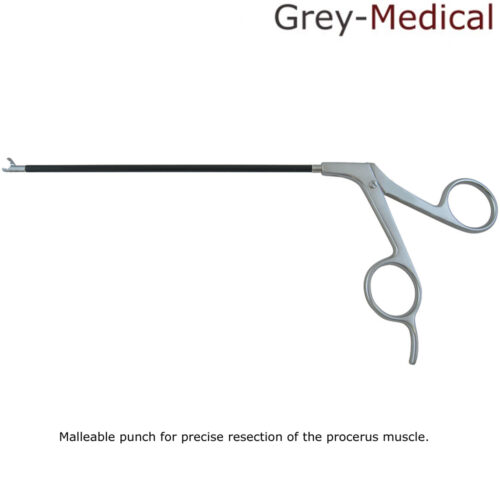Endoscopic Biopsy Forceps: A Key Tool in Minimally Invasive Diagnosis
Endoscopic Biopsy Forceps: A Key Tool in Minimally Invasive Diagnosis
Blog Article
Endoscopic biopsy forceps are specialized medical instruments designed for the precise collection of tissue samples during endoscopic procedures. These tools play a critical role in diagnosing various conditions by allowing physicians to retrieve tissue from internal organs or structures with minimal invasiveness. Whether used in gastrointestinal (GI), bronchial, or urological procedures, endoscopic biopsy forceps are an essential component of modern diagnostic medicine.

Features and Design of Endoscopic Biopsy Forceps
Endoscopic biopsy forceps are crafted with precision to navigate through the narrow channels of an endoscope. These forceps typically feature:
- A Long, Flexible Shaft: Designed to pass through the endoscope's working channel, reaching deep-seated tissues in the body.
- Serrated or Smooth Jaws: The jaws are crafted to securely grasp and cut tissue samples with minimal trauma. Some models feature cup-shaped jaws for increased precision.
- Ergonomic Handle: Enables the surgeon to operate the forceps with precision and control, ensuring accurate sampling.
- Material: High-quality stainless steel or medical-grade alloys ensure durability, corrosion resistance, and compatibility with sterilization processes.
Some forceps are equipped with additional features, such as alligator jaws, needle tips, or coatings to minimize friction during use. Disposable and reusable models are available, depending on the clinical needs and preferences.
Applications of Endoscopic Biopsy Forceps
Endoscopic biopsy forceps are widely used in various diagnostic and therapeutic procedures, including:
- Gastrointestinal Endoscopy: Commonly employed in upper GI endoscopies and colonoscopies to sample tissues from the stomach, esophagus, or intestines for conditions like cancer, ulcers, or inflammatory diseases.
- Bronchoscopy: Used to collect tissue samples from the lungs or airways for diagnosing respiratory conditions such as lung cancer or infections.
- Urological Procedures: Help in retrieving tissue samples from the bladder, urethra, or kidneys during cystoscopy or ureteroscopy.
- ENT Procedures: Utilized in nasal endoscopy or laryngoscopy to biopsy tissues from the nasal cavity or larynx.
Benefits of Endoscopic Biopsy Forceps
The use of endoscopic biopsy forceps offers several advantages, including:
- Minimally Invasive: Allows for tissue sampling without the need for large incisions, reducing recovery time and patient discomfort.
- Precision: The design of the forceps ensures accurate sampling from specific areas of interest.
- Versatility: Can be used in a wide range of endoscopic procedures across multiple medical specialties.
- Cost-Effectiveness: Disposable forceps offer a cost-effective solution for single-use procedures, while reusable options provide long-term value with proper maintenance.
Choosing the Right Biopsy Forceps
Selecting the appropriate biopsy forceps depends on several factors:
- Type of Procedure: The intended application (e.g., GI, bronchial, or urological) determines the required shaft length, jaw design, and flexibility.
- Tissue Type: Forceps with serrated or cup-shaped jaws are better suited for tougher tissues, while smooth jaws may be preferred for delicate structures.
- Reusable vs. Disposable: Disposable forceps are ideal for preventing cross-contamination, while reusable forceps are more economical in the long term.
Maintenance and Care of Reusable Biopsy Forceps
Proper maintenance of reusable endoscopic biopsy forceps is crucial for preserving their functionality and safety. After each use, the forceps should be thoroughly cleaned to remove biological debris, followed by sterilization to prevent contamination. Regular inspections for wear, such as dull jaws or damaged shafts, are necessary to maintain performance and ensure patient safety.
Conclusion
Endoscopic biopsy forceps are indispensable tools in modern diagnostic medicine, enabling precise and minimally invasive sampling of tissues. Their innovative design and versatility make them essential for diagnosing and managing a wide range of conditions across multiple specialties. By selecting the right forceps for each procedure and adhering to proper maintenance protocols, healthcare professionals can ensure accurate diagnoses and copyright the highest standards of patient care. Report this page